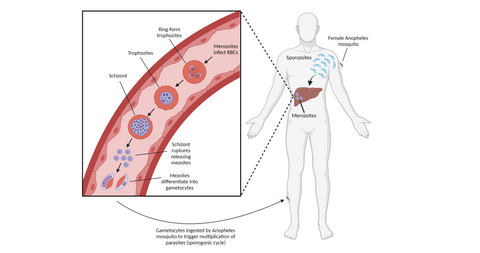In the microbiology field, most of the organisms we study are invisible to the naked eye. This of course means that without a clear, aesthetically-engaging visual representation to accompany a piece of text, non-experts can sometimes struggle to fully grasp complex microbiology systems and concepts. Scientific figures, illustrations and animations therefore have an incredibly valuable role in the communication of microbiology, something which was highlighted recently in this great Nature Microbiology editorial.1
One professional scientific illustrator described the role of scientific imagery as threefold – to grab the attention, to be free from language barriers and to act as a Trojan horse for information.2 Figures and illustrations have a long history in science communication, from early charcoal sketches of the observed world dating back millennia through to complex three-dimensional animations of molecular interactions within cells. Compelling visuals can be crucial in sharing new discoveries and when effective, can allow information to be more easily comprehendible than with words. A powerful images not only increases the accessibility of research for those outside the field, but also ensures that the full impact of a piece of work is clearly conveyed to manuscript or grant reviewers.
However, creating high-quality illustrations and figures requires precious time, resource, skills and tools – some or all of which you might not have. It was this notion that formed the basis of our new figure drafting services, which we launched just last week. If you think you could benefit from a first-rate scientific visual to complement your work, then read on to learn a bit more about our two figure drafting options on offer.
We can produce eye-catching and precise scientific figures, schematics and illustrations with in-house resource using the online scientific illustration tool Biorender – this is a great lower-cost option if you’re struggling with a figure for an upcoming manuscript, grant application or publication. See the image below for an example.

Or perhaps you’re looking for something more bespoke – in which case, we can partner with one of our freelance professional scientific art editors to produce more sophisticated figures or illustrations that meets the exacting standards of high-impact journals. These editors have decades of experience in the creation of diagrams, illustrations and schematics within the scientific publishing field. Below is just one example of the type of figure they can create. The art editors that we work with are also deeply experienced in the design and production of high quality visually-attractive documents for a range of purposes.

With either the in-house or professional options, we can help to ensure your grant, manuscript or scientific document stands out from the pack, providing you with clear, visually-attractive graphics to couple the written description of your work to maximise its impact.
If you’re interested in either of our figure drafting service options, or have a query about the services that we haven’t answered in the text below, then please contact us to discuss the specifics of the project.
How much do these figure drafting services cost?
We’re charging £25 per hour for the in-house figure drafting service, and £40 per hour for the professional art editor figure drafting service. In our experience to date, a single figure takes between 1-4 hours, depending on the complexity and level of editorial involvement needed in shaping the design.
Why should I spend money on a figure when I could create one myself?
You may well be an accomplished amateur illustrator, in which case this service is probably not for you. However, for the rest of you, we are confident of producing a substantially higher standard of graphic than can be achieved using PowerPoint or similar tools. Having a highly polished figure or illustration can enhance the impact and relevance of your work to all reviewers, and could help increase your chances of success in today’s funding and publication landscape.
Can I see more examples of what you can create with either service?
Absolutely – take a look at each relevant page on our website to view more examples of our work: in-house figure service / professional art editor service.
Will I receive editable files and will the image rights be mine?
Yes and yes. Using either the in-house service or professional service, we provide clients figures in a range of formats, including the original editable files. Similarly, clients retain all rights to the images.
I want to add a figure drafting service to my basket on the website, but the price is listed at £0 – why is this?
We prefer to discuss the specifics of a project through first before you pay anything up front, so if you’re interested in either of our figure drafting service options the first port of call is to please contact us.
- Visualizing the unseen. Nat Microbiol7, 1–2 (2022). https://doi.org/10.1038/s41564-021-01044-1
- Leach, T. Scientist or artist? Why not be both?. Nat Microbiol7, 4 (2022). https://doi.org/10.1038/s41564-021-00995-9


